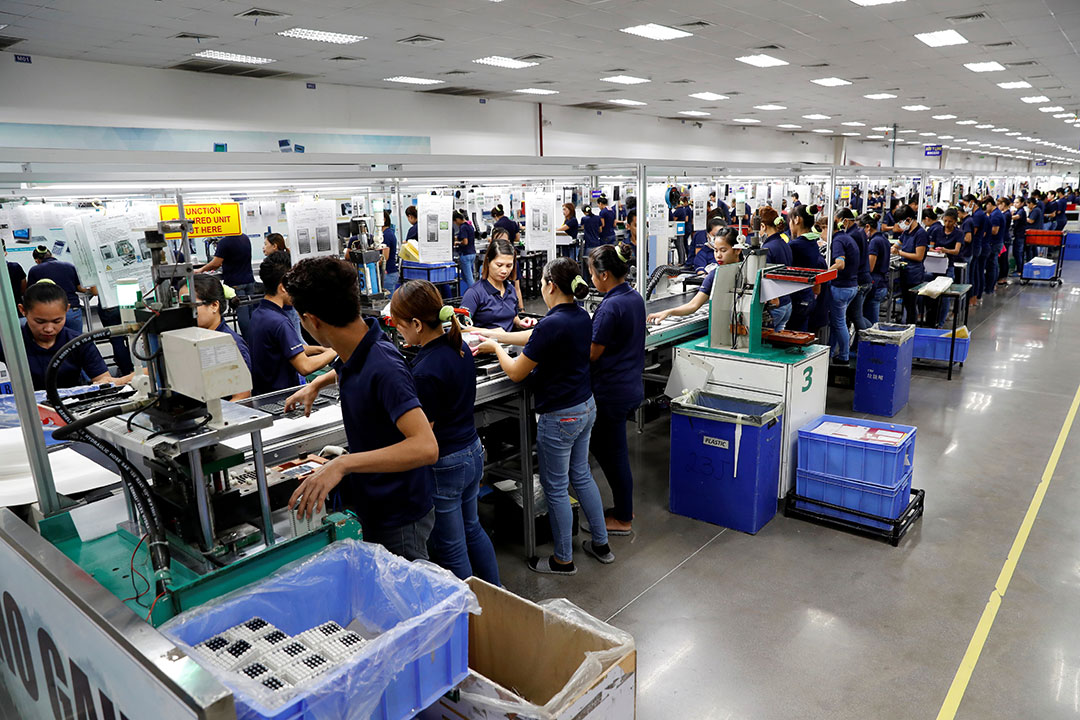By BusinessWorld,Cedtyclea
Copyright bworldonline

By Matthew Miguel L. Castillo, Researcher
MANUFACTURING OUTPUT fell to a five-month low in July amid uncertainty over US tariff policies and bad weather, analysts said.
Preliminary results of the Philippine Statistics Authority’s (PSA) latest Monthly Integrated Survey of Selected Industries showed that factory output, as measured by the volume of production index (VoPI), shrank by 1.1% year on year in July.
This was a reversal of the 7% growth a year ago and 1.6% expansion in June.
It was also the lowest in five months since the 1.9% decline in February.
On a monthly basis, July’s output picked up by 3.4%, a reversal from the 4.3% decline in June. Stripping out seasonality factors, it inched up by 2.6%.
In the seven months to July, manufacturing output growth averaged 0.4%, significantly slower than the 2.7% a year ago.
The PSA attributed the contraction in July factory output to the slowdown in production of food (16.5% in July from 22.4% in June); computer, electronic, and optical products (5% from 7.3%); and transportation equipment (9.3% from 13%).
Ten other divisions saw a slowdown, while nine posted annual increments.
PSA data showed the three largest contributors to the year-on-year decline in the VoPI were the faster contraction seen in the divisions of basic metals (-25.4% from -24.9%), coke and refined petroleum products (-15.7% from -15.2%), and chemicals and chemical products (-22.2% from -14.9%).
Nicholas Antonio T. Mapa, chief economist at Metropolitan Bank & Trust Co., said in a Viber message the annual contraction in July may be due to weather disturbances that may have slowed factory activity across sectors.
Data from the Philippine Atmospheric, Geophysical Astronomical Services Administration’s (PAGASA) Climate Impact Assessment for July showed that several weather systems caused excessive rainfall that month.
University of Asia and the Pacific economist Cid L. Terosa said the demand for computer products in July was affected by external headwinds.
“The slowdown in computer products reflected the slowdown and fragile conditions faced by the global electronics and computer industry due to US reciprocal tariffs,” Mr. Terosa said in an e-mail.
US President Donald J. Trump’s seesaw tariff policies caused confusion and market instability since April. The US initially slapped a 17% reciprocal tariff on goods from the Philippines, then raised it to 20%, before eventually setting a 19% tariff rate that was implemented in August.
Sergio R. Ortiz-Luis, Jr., president of Philippine Exporters Confederation, Inc., said the flip-flopping US trade policy dampened overall demand for computer and electronic products.
Separate data from the PSA showed electronic products had the highest share of exported goods by value in July, accounting for 53.5% or $3.92 billion of the $7.34-billion total.
“Weaker demand in major global economies also contributed to the slowdown in electronics and computer production,” Mr. Terosa said.
July’s capacity utilization averaged 77.1%, higher than the 76.6% logged in June and 75.8% a year earlier.
All industry divisions reported capacity utilization rates of more than 60% during the month.
The top three industry divisions with the highest capacity utilization rates were tobacco products (85.1%), other manufacturing and repair and installation of machinery and equipment (83.4%), and leather and related products, including footwear (83%).
For the rest of the year, Mr. Terosa said manufacturing production may get a lift from “improving market conditions, reinvigorated domestic demand, a low inflation environment, and positive business sentiment.”
However, the implementation of higher US tariffs, which began in August, will likely hurt demand for Philippine exports.
Mr. Ortiz-Luis said output may remain sluggish due to weak export demand. “Lower exports mean lower production,” he added.
“Tariff projections may impact demand for Philippine exports and eventually volume of production but so far exports have managed to grow. We expect moderate expansion across sectors possibly on better weather and as the Philippines seeks to find other markets outside the US for exports,” Mr. Mapa said.
Mr. Terosa said the impact of US tariffs on the electronics and semiconductor sectors should be monitored.
“US reciprocal tariffs, however, can disrupt the groundwork for gradual and sustainable recovery in the manufacturing sector… Overall, however, I think the impact of US reciprocal tariffs on manufacturing will be subdued,” he said.



